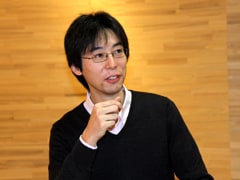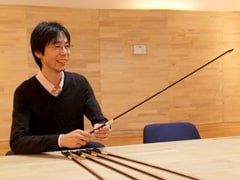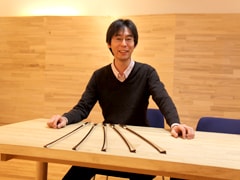Yamaha propose cinq nouveaux arcs en carbone qui offrent une apparence semblable à celle du bois, ainsi qu'une sélection de poids et d'équilibres pour satisfaire les préférences individuelles des joueurs.
Fonctionnalités
Cinq modèles offrant des variations de poids et d'équilibre
En utilisant le carbone, qui permet une conception et une fabrication de précision, nous avons produit 5 variantes d'arcs avec différents poids et différents équilibres pour offrir aux joueurs une plus large gamme d'arcs parmi lesquels choisir.
(Les valeurs de poids et de balance indiquées ci-dessus peuvent présenter une erreur de +0,3g/-0,3g, +5mm/-5mm).
L'artisanat hautement qualifié
YBN100 est une série d'archets en carbone fabriqués au Japon, assemblés par des artisans hautement qualifiés dans l'atelier Yamaha.
Alternative au Pernambuoco de qualité supérieure
Grâce aux connaissances acquises par une analyse approfondie des techniques et méthodes traditionnelles de fabrication des archets en bois, nous sommes parvenus à obtenir les mêmes performances et la même qualité que le bois, tout en conservant les caractéristiques tonales douces et l'élasticité.
Des arcs orientés vers la performance
Les nouvelles technologies de fabrication d'arcs utilisées en combinaison avec les matériaux en carbone nous ont permis de contrôler à la fois l'équilibre et le poids de l'arc, ainsi que sa rigidité et ses caractéristiques de vibration, offrant ainsi des arcs à l'équilibre idéal.
Historique du développement

Please tell us about the development of Yamaha's Carbon Bows.

Yamaha introduced its first carbon bows, the CBB series, in 2002 and we've continued to expand our lineup since. Our CBB series bows have become widely popular and are used by a number of international artists including Zakhar Bron and Rainer Kuchl, and a large number of amateur players as well.
What does the YBN100 offer that wasn't available before?
We created a lineup consisting of five violin bow models. Player preferences vary widely with bows, and especially the bow's weight and balance are elements that particularly vary in user preferences. With these carbon bows we've addressed this by offering a selection of 5 different models, with different weights and different balances. In trying these you might discover something new, for example, you may think that light bows are better but find that a slightly heavier bow may be better; or the bow that has its center of gravity closer to the frog is easier to play.
Are there any other new features of YBN100?

We gave the bows a wood-like appearance made possible through an advanced FRP (Fiber Reinforced Plastic) technology developed for this project.
On touch and tone, we really focused on improving the fundamental performance of the bow. We first spent some time analyzing bows made with the finest quality pernambuco. We focused particularly on the bow's flexible rigidity and vibration when playing beautiful tone with a natural feel.
Could you find a sense of accomplishment during development?

There were several occasions during the YBN100 development where people mistook the carbon bows for wood ones, which was pleasing.
One of the development team members told me that while practicing with a small ensemble he asked one of the members to try one of the traditional black-hued carbon bows. The member replied, "I don't like carbon bows very much," then asked, "Let me try that one", which had a wooden appearance. He didn't know it but the bow he was about to borrow was one of the YBN100 prototypes. Using the borrowed bow he said, "Ah yes, wood bows are the best!" and went on playing completely satisfied. When he was told that the bow he was using was carbon, he refused to believe it. Hearing that story made me smile.
When they were photographing the YBN100 bows prior to their launch I dropped by the studio to see how things we going. When I told the staff at the studio that these were all made from carbon, they were totally surprised. No one at the studio was aware that these were made of carbon, they just assumed that they were made of wood. It makes me happy when people are surprised like this.

Whether you are familiar with wood bows or not, if you look closely you can spot the differences. Of course I'm happy when people mistake these bows for ones made of wood, but I can say with confidence, that if you take away the prejudice, you'll find that they are not all that different from wood. That goes for their performance as well as looks.
Finally, would you like to say anything to the readers?
New or old and regardless of price there are at present, a lot of wonderful wooden bows available, and I think that will remain so into the future. I just hope that there is a wider selection of bows available in the near future, and when people find that perfect bow, they realize that it is in fact, made of carbon. By all means, try one of the YBN100 bows.
* Les spécifications peuvent être modifiées sans préavis. Les couleurs et les finitions illustrées peuvent différer de celles des produits réels.

